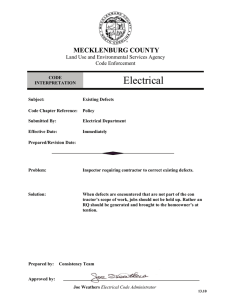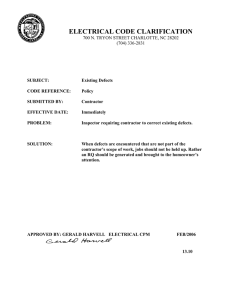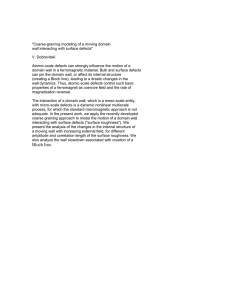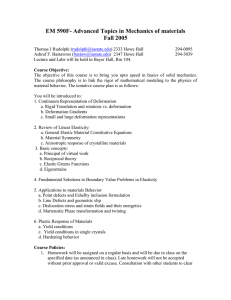Document 13554851
advertisement
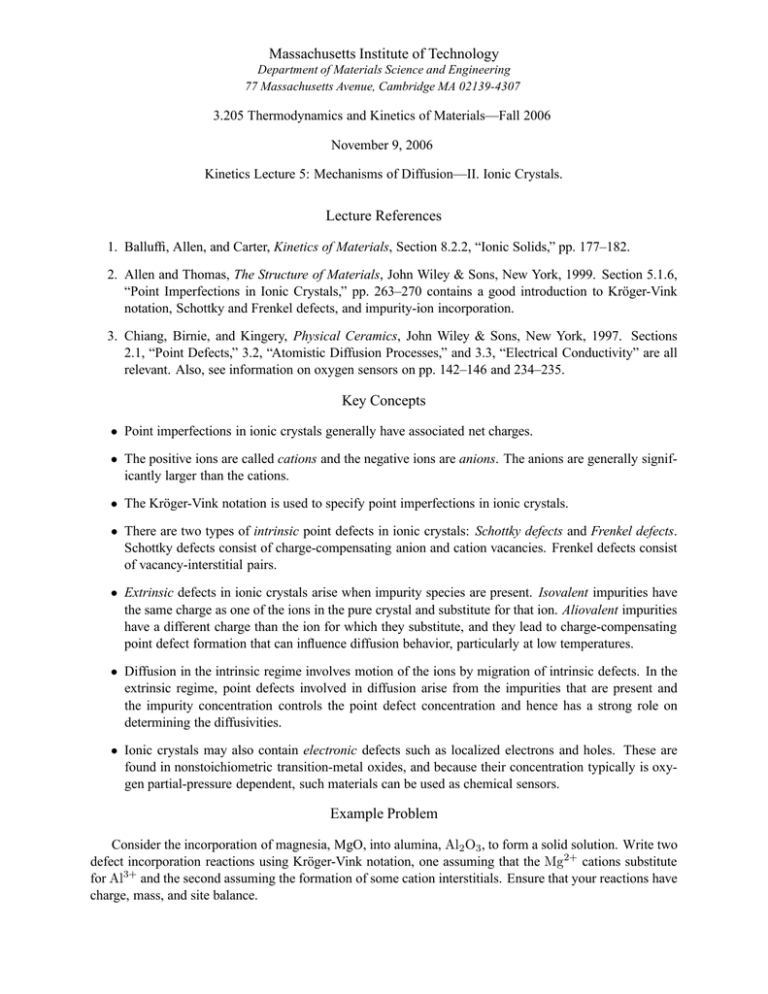
Massachusetts Institute of Technology Department of Materials Science and Engineering 77 Massachusetts Avenue, Cambridge MA 02139-4307 3.205 Thermodynamics and Kinetics of Materials—Fall 2006 November 9, 2006 Kinetics Lecture 5: Mechanisms of Diffusion—II. Ionic Crystals. Lecture References 1. Balluffi, Allen, and Carter, Kinetics of Materials, Section 8.2.2, “Ionic Solids,” pp. 177–182. 2. Allen and Thomas, The Structure of Materials, John Wiley & Sons, New York, 1999. Section 5.1.6, “Point Imperfections in Ionic Crystals,” pp. 263–270 contains a good introduction to Kröger-Vink notation, Schottky and Frenkel defects, and impurity-ion incorporation. 3. Chiang, Birnie, and Kingery, Physical Ceramics, John Wiley & Sons, New York, 1997. Sections 2.1, “Point Defects,” 3.2, “Atomistic Diffusion Processes,” and 3.3, “Electrical Conductivity” are all relevant. Also, see information on oxygen sensors on pp. 142–146 and 234–235. Key Concepts • Point imperfections in ionic crystals generally have associated net charges. • The positive ions are called cations and the negative ions are anions. The anions are generally signif­ icantly larger than the cations. • The Kröger-Vink notation is used to specify point imperfections in ionic crystals. • There are two types of intrinsic point defects in ionic crystals: Schottky defects and Frenkel defects. Schottky defects consist of charge-compensating anion and cation vacancies. Frenkel defects consist of vacancy-interstitial pairs. • Extrinsic defects in ionic crystals arise when impurity species are present. Isovalent impurities have the same charge as one of the ions in the pure crystal and substitute for that ion. Aliovalent impurities have a different charge than the ion for which they substitute, and they lead to charge-compensating point defect formation that can influence diffusion behavior, particularly at low temperatures. • Diffusion in the intrinsic regime involves motion of the ions by migration of intrinsic defects. In the extrinsic regime, point defects involved in diffusion arise from the impurities that are present and the impurity concentration controls the point defect concentration and hence has a strong role on determining the diffusivities. • Ionic crystals may also contain electronic defects such as localized electrons and holes. These are found in nonstoichiometric transition-metal oxides, and because their concentration typically is oxy­ gen partial-pressure dependent, such materials can be used as chemical sensors. Example Problem Consider the incorporation of magnesia, MgO, into alumina, Al2 O3 , to form a solid solution. Write two defect incorporation reactions using Kröger-Vink notation, one assuming that the Mg2+ cations substitute for Al3+ and the second assuming the formation of some cation interstitials. Ensure that your reactions have charge, mass, and site balance.
